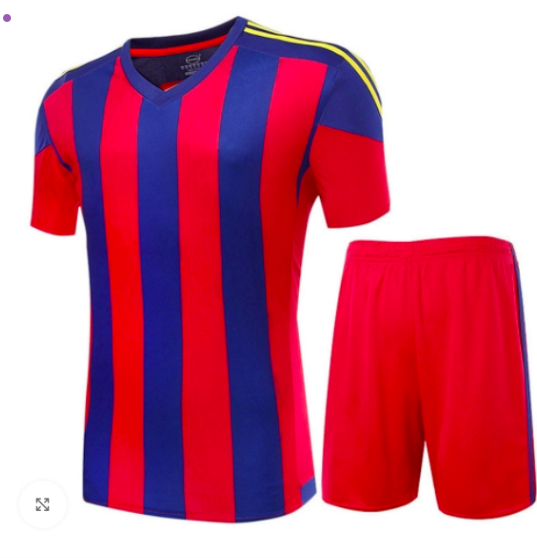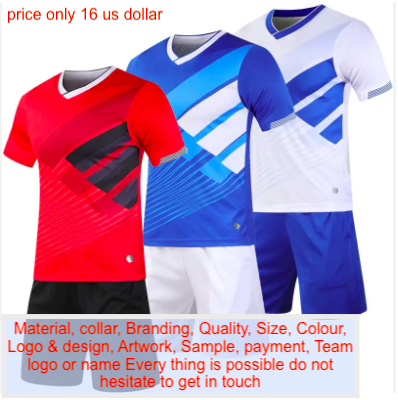Soccer uniforms are designed for performance, comfort, and durability, using materials that balance breathability, flexibility, and moisture management. Here’s a breakdown of the primary materials used in modern soccer uniforms:

1. Polyester (Primary Material)
- Why Used: Polyester is the most common material due to its lightweight, durable, and moisture-wicking properties. It keeps players dry by pulling sweat away from the skin.
- Features:
- Moisture-Wicking: Technologies like Nike’s Dri-FIT or Adidas’ Climalite/Climacool use polyester to wick sweat and promote quick drying.
- Durability: Resists stretching, shrinking, or tearing during intense play.
- Breathability: Often woven with microfibers to allow airflow.
- Common Use: Jerseys, shorts, and sometimes socks.

2. Polyester Blends
- Blends with: Elastane (Spandex), Nylon, or Cotton (rarely).
- Why Used:
- Elastane/Spandex: Adds stretch for a snug, flexible fit, especially in jerseys and shorts.
- Nylon: Enhances durability and smoothness, often used in high-end kits.
- Cotton (less common): Occasionally blended for comfort in training gear, but avoided in match kits due to sweat retention.
- Common Use: Tight-fitting jerseys, shorts, or base layers.
3. Mesh Fabrics
- Why Used: Mesh panels (often polyester-based) are integrated into jerseys and shorts for ventilation in high-sweat areas like underarms or sides.
- Features: Lightweight, promotes airflow, reduces overheating.
- Common Use: Side panels, back of jerseys, or sock ventilation zones.

4. Recycled Polyester
- Why Used: Increasingly popular for sustainability. Brands like Adidas and Nike use recycled polyester (from plastic bottles) for eco-friendly kits.
- Features: Same performance as virgin polyester but with a lower environmental impact.
- Examples: Many 2023–2025 FIFA World Cup and club kits (e.g., Manchester United, Real Madrid) use recycled materials.
5. Socks-Specific Materials
- Materials: Polyester, Nylon, Cotton blends, Elastane, and sometimes Polypropylene.
- Why Used:
- Nylon/Polyester: Provides structure and durability.
- Elastane: Ensures a snug fit to prevent slipping.
- Cotton (in blends): Adds comfort but less common in high-performance socks.
- Polypropylene: Used in some socks for extra moisture-wicking.
- Features: Compression zones, cushioning (e.g., heel and toe), and arch support for grip inside boots.
Additional Notes
- Technology Enhancements:
- Brands use proprietary tech (e.g., Puma’s DryCELL, Under Armour’s HeatGear) to enhance breathability and fit, but these are still polyester-based.
- Anti-odor treatments are often applied to prevent bacterial growth.
- Customization: Numbers, names, and logos are typically heat-pressed or sublimated onto the fabric using vinyl or dye, ensuring they don’t peel easily.
- Historical Context: Older uniforms (pre-2000s) used heavier cotton or cotton-poly blends, but modern kits prioritize synthetic performance fabrics.
- Sustainability Trend: By 2025, major brands increasingly use recycled materials, with some kits (e.g., Nike’s 2024–2025 lines) made from 100% recycled polyester.
If you’re asking about a specific brand, team, or kit (e.g., 2025 season jerseys), let me know, and I can dig into more details or check for recent innovations!